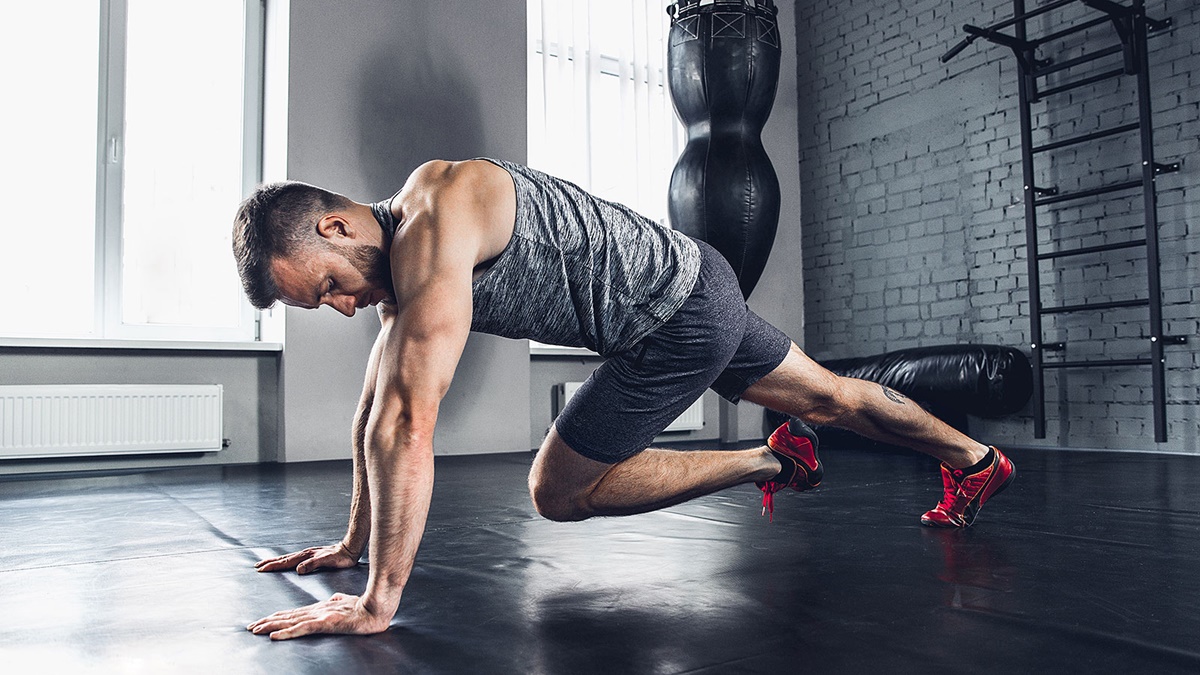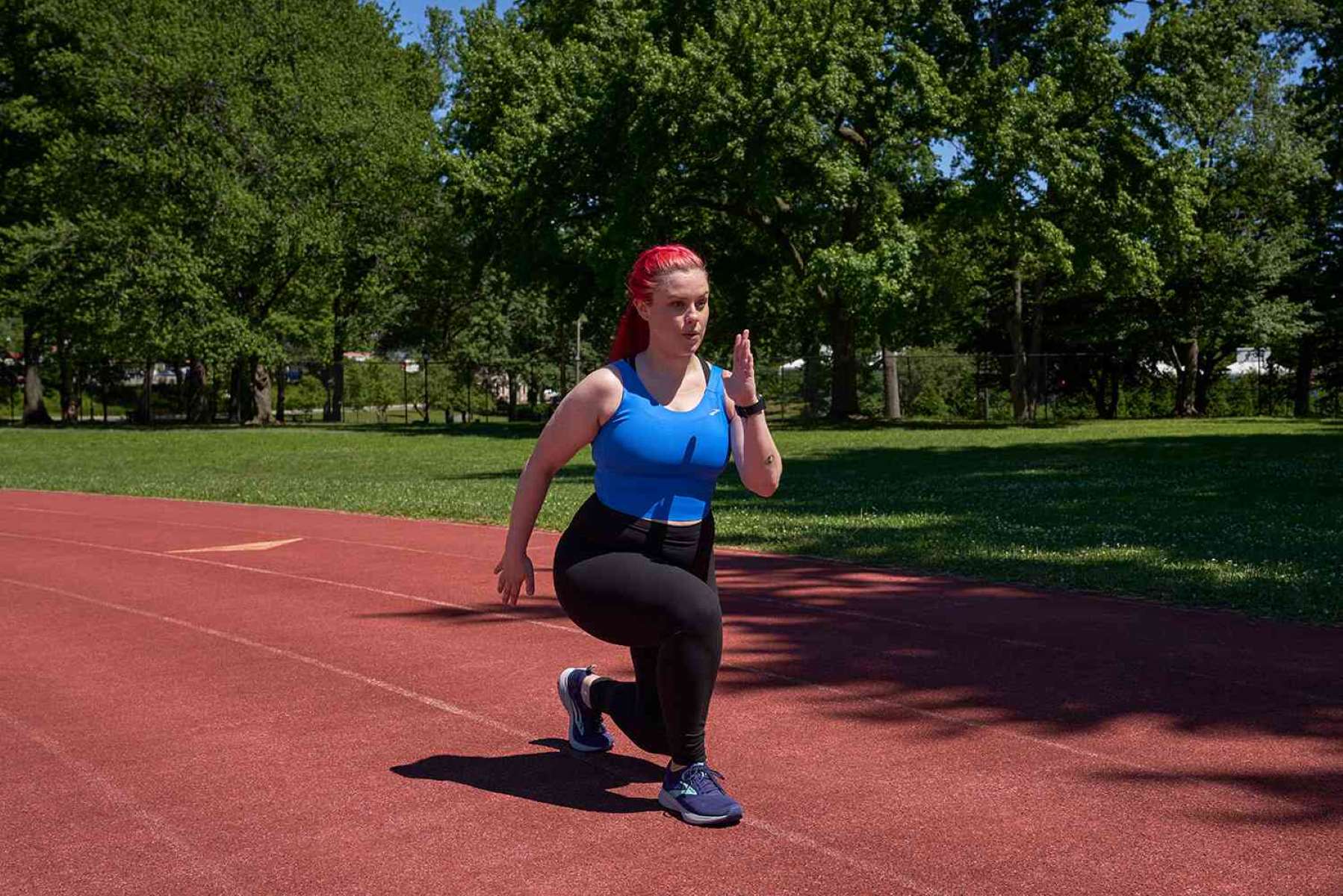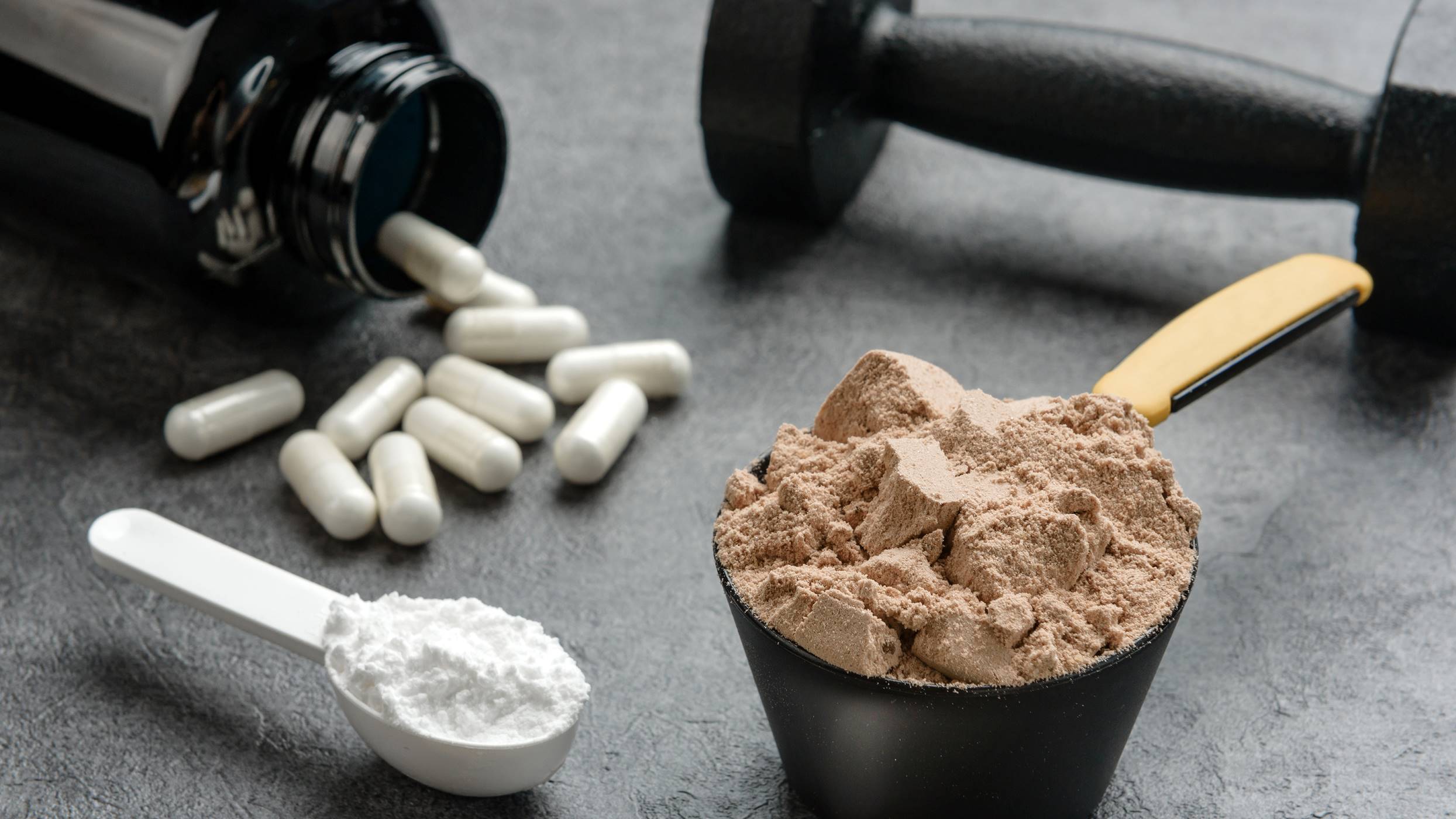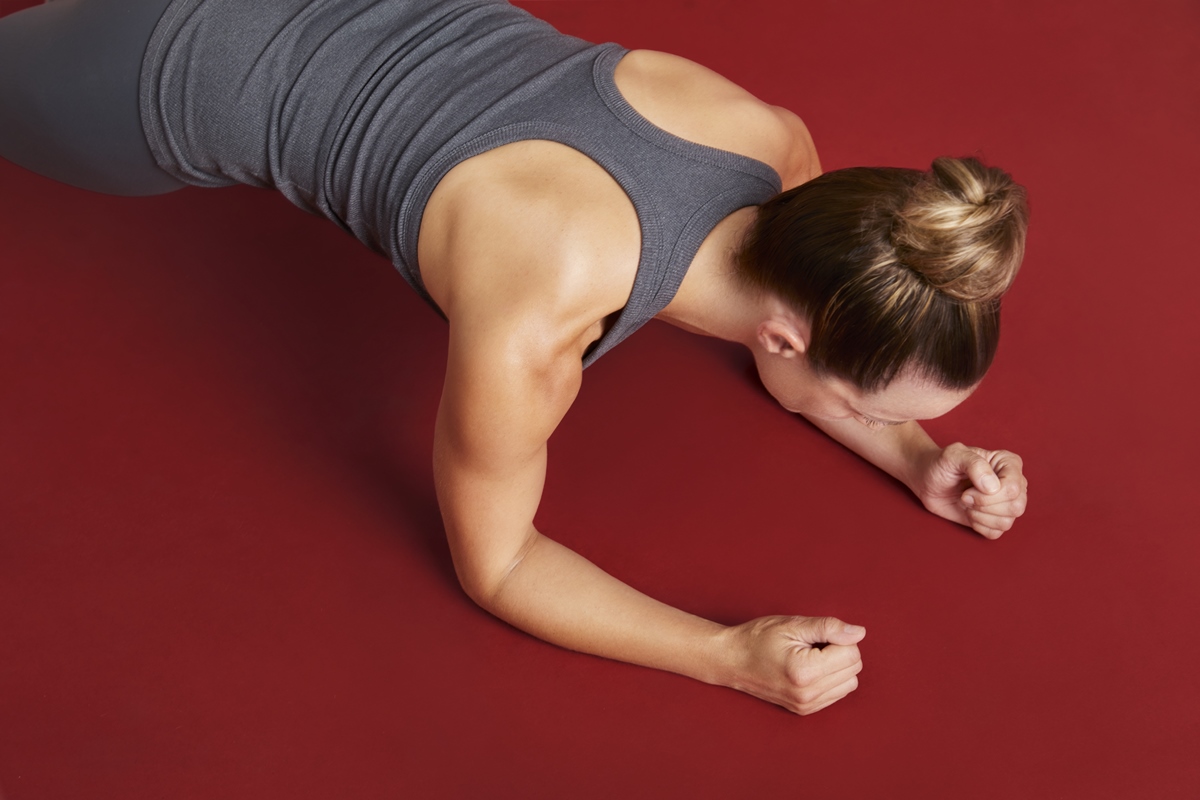Home>Misc>Featured>What Happens To Your Body When You Exercise


Featured
What Happens To Your Body When You Exercise
Modified: January 2, 2024
Discover the incredible benefits of exercise on your body. From increased energy levels to improved mood, get featured in the positive changes that happen when you work out.
Introduction
Exercise is not only crucial for maintaining a healthy weight, but it also plays a vital role in overall physical and mental well-being. When we engage in regular exercise, our bodies undergo various changes that can have a transformative impact on our health. From increased circulation to improved brain function, the benefits of exercise are profound.
In this article, we will explore the fascinating ways in which our bodies respond to exercise. Understanding these physiological changes can motivate and inspire us to prioritize physical activity in our daily lives. So, let’s delve into what happens to our bodies when we exercise.
Exercise is not only crucial for maintaining a healthy weight, but it also plays a vital role in overall physical and mental well-being. When we engage in regular exercise, our bodies undergo various changes that can have a transformative impact on our health. From increased circulation to improved brain function, the benefits of exercise are profound.
In this article, we will explore the fascinating ways in which our bodies respond to exercise. Understanding these physiological changes can motivate and inspire us to prioritize physical activity in our daily lives. So, let’s delve into what happens to our bodies when we exercise.
In this article, we will explore the fascinating ways in which our bodies respond to exercise. Understanding these physiological changes can motivate and inspire us to prioritize physical activity in our daily lives. So, let’s delve into what happens to our bodies when we exercise.
In this article, we will explore the fascinating ways in which our bodies respond to exercise. Understanding these physiological changes can motivate and inspire us to prioritize physical activity in our daily lives. So, let’s delve into what happens to our bodies when we exercise.
In this article, we will explore the fascinating ways in which our bodies respond to exercise. Understanding these physiological changes can motivate and inspire us to prioritize physical activity in our daily lives. So, let’s delve into what happens to our bodies when we exercise.
In this article, we will explore the fascinating ways in which our bodies respond to exercise. Understanding these physiological changes can motivate and inspire us to prioritize physical activity in our daily lives. So, let’s delve into what happens to our bodies when we exercise.
Increased Heart Rate and Circulation
When you engage in physical exercise, your heart rate increases as your body demands more oxygen to fuel your muscles. This increased heart rate is a result of the body’s natural response to the increased need for oxygen and nutrients.
As your heart rate rises, your blood vessels widen, allowing for improved blood flow to your muscles and organs. This increased circulation helps deliver oxygen and nutrients more efficiently throughout your body, providing the necessary fuel for your muscles to work effectively.
Regular exercise not only strengthens your heart muscle but also improves the elasticity of your blood vessels. This enhances your cardiovascular system’s capacity to pump oxygenated blood to your muscles and carry waste products away. Over time, this improved circulation can lower your resting heart rate, making your heart more efficient at rest and during physical activity.
The benefits of increased heart rate and circulation are not limited to your muscles and cardiovascular system alone. Improved blood flow also benefits your brain by enabling the delivery of oxygen and nutrients necessary for optimal cognitive function. Studies have shown that regular exercise can enhance memory, attention, and overall brain health.
Incorporating activities that increase heart rate and circulation, such as aerobic exercises like running, swimming, or cycling, can significantly improve your overall cardiovascular health. It’s important to gradually increase the intensity of your workouts to allow your body to adapt and avoid straining your heart.
Next time you engage in physical exercise, pay attention to how your heart rate increases and how your body responds. You’ll be amazed at the positive impact that increased heart rate and circulation can have on your overall health and well-being.
Improved Respiratory Function
When you exercise, your body requires more oxygen to meet the increased demand from your muscles. As a result, your respiratory system kicks into gear to deliver oxygen to your lungs and remove carbon dioxide, a waste product of cellular respiration.
Regular exercise can improve your respiratory function in several ways. First, it strengthens the muscles involved in breathing, such as the diaphragm and intercostal muscles. These muscles become more efficient at expanding and contracting, allowing for deeper and more effective breathing.
Additionally, exercise enhances lung capacity by increasing the amount of air you can inhale and exhale. Over time, this helps improve your overall lung function and oxygen exchange efficiency. This increased lung capacity can be particularly beneficial for individuals with respiratory conditions such as asthma or chronic obstructive pulmonary disease (COPD).
Furthermore, physical activity can improve the efficiency of your body’s oxygen transportation system. This includes increased production of red blood cells, which carry oxygen from the lungs to the muscles, as well as improved blood vessel function to ensure efficient oxygen delivery to the tissues.
By improving your respiratory function through exercise, you may experience benefits such as increased endurance, reduced breathlessness during physical activity, and improved overall energy levels. It can also help prevent or manage certain respiratory conditions by strengthening the respiratory muscles and reducing the risk of respiratory infections.
Remember to listen to your body and consult with a healthcare professional if you have any concerns or pre-existing respiratory conditions. They can provide guidance on the appropriate types and intensity of exercise that are safe and beneficial for your specific needs.
So, the next time you engage in physical activity and feel your breathing rate increase, know that your respiratory system is working hard to meet the demands of your body. Embrace the positive impact exercise has on your respiratory function and enjoy the many benefits it brings to your overall health.
Release of Endorphins
Have you ever experienced a rush of happiness and well-being after a workout? This is often attributed to the release of endorphins, which are chemicals produced by the brain that act as natural painkillers and mood boosters.
When you engage in physical exercise, particularly activities with moderate to high intensity, your body releases endorphins into your bloodstream. Endorphins interact with receptors in your brain, reducing the perception of pain and promoting a sense of euphoria and relaxation.
This natural “feel-good” effect brought on by endorphins is commonly known as the “runner’s high,” but it can occur with various forms of exercise, not just running. Whether it’s a challenging gym session, a brisk walk in nature, or a dance class, any physical activity that gets your heart rate up can trigger the release of endorphins.
Regular exercise not only enhances the release of endorphins during the activity but also helps improve your overall mood and mental well-being in the long term. Studies have shown that physical activity can help reduce symptoms of stress, anxiety, and depression, and even improve self-esteem and body image.
In addition to endorphins, exercise stimulates the production of other brain chemicals such as dopamine, serotonin, and norepinephrine, which are involved in regulating mood, sleep, and motivation. This chemical cocktail contributes to the positive mental and emotional effects of exercise.
So, the next time you’re feeling down or in need of an emotional boost, consider engaging in physical activity. The release of endorphins and other mood-enhancing chemicals can help brighten your mood, alleviate stress, and provide a natural and healthy way to improve your mental well-being.
Remember, consistency is key when it comes to experiencing the mood-enhancing benefits of exercise. Incorporate regular physical activity into your routine and discover the positive impact it has on your emotional state and overall quality of life.
Increased Muscle Strength and Flexibility
One of the most noticeable effects of exercise is the improvement in muscle strength and flexibility. Whether you’re lifting weights, doing yoga, or engaging in bodyweight exercises, regular physical activity can transform your body composition and enhance your physical capabilities.
Strength training exercises, such as weightlifting or resistance training, stimulate muscle fibers, leading to an increase in muscle size and strength. As you challenge your muscles with progressively heavier weights or resistance, they adapt by becoming more resilient and capable of generating more force.
In addition to increasing muscle strength, exercise also improves muscle flexibility. Flexibility refers to the range of motion around a joint. By incorporating exercises that stretch and lengthen your muscles, such as yoga or dynamic stretching, you can improve your flexibility over time.
Having strong and flexible muscles is not only beneficial for athletic performance but also for everyday tasks and overall functional movement. Improved muscle strength allows you to lift and carry objects more easily, while enhanced flexibility enables you to move with greater ease and reduce the risk of injury.
Moreover, increased muscle strength plays a vital role in maintaining proper posture and joint stability. When your muscles are strong, they provide better support to your bones and joints, reducing the risk of musculoskeletal imbalances and conditions such as back pain.
It’s important to note that muscle strength and flexibility are not reserved for bodybuilders or athletes. Individuals of all fitness levels and ages can experience improvements in these areas through regular exercise.
Make sure to include a variety of exercises that target different muscle groups and incorporate both strength training and flexibility exercises into your routine. This balanced approach will help you build lean muscle, enhance your flexibility, and reap the numerous benefits that come with a stronger and more flexible body.
Enhanced Brain Function and Cognitive Performance
Exercise is not only good for your body; it’s also beneficial for your brain. Regular physical activity has been shown to enhance brain function and improve cognitive performance across all age groups.
When you engage in exercise, you increase blood flow to the brain, delivering oxygen and essential nutrients that support optimal brain function. This improved blood flow can enhance memory, attention, and the ability to process information effectively.
Studies have shown that physical activity can stimulate the production of new neurons in the hippocampus, a region of the brain associated with learning and memory. This neurogenesis can contribute to improved cognitive function and a reduced risk of age-related cognitive decline.
In addition to promoting the growth of new brain cells, exercise has been found to increase the levels of various chemicals in the brain that support neural function. These chemicals include brain-derived neurotrophic factor (BDNF), which plays a role in promoting the survival and growth of neurons, and endorphins, which can improve mood and reduce stress.
Regular exercise has also been linked to a reduced risk of neurological conditions such as Alzheimer’s disease and dementia. Physical activity can help maintain brain health by reducing inflammation, promoting the growth of new blood vessels, and protecting against oxidative stress, all of which contribute to neurodegenerative diseases.
The cognitive benefits of exercise are not limited to adults; physical activity has been shown to positively impact brain development and cognitive function in children and adolescents. Regular exercise can improve attention span, academic performance, and overall cognitive abilities in young individuals.
To reap the cognitive benefits of exercise, it’s recommended to incorporate a variety of physical activities into your routine. Engage in aerobic exercises, such as brisk walking, swimming, or cycling, which elevate your heart rate and increase blood flow to the brain. Additionally, activities that require coordination, balance, and problem-solving, like martial arts or dancing, can further enhance cognitive function.
So, whether you’re hitting the gym for a workout or engaging in outdoor activities, know that you’re not only benefiting your body but also boosting your brain power and keeping your mind sharp.
Weight Loss and Body Composition Changes
Exercise plays a crucial role in weight management and body composition changes. When combined with a balanced diet, regular physical activity can help you lose weight, reduce body fat, and achieve a healthier body composition.
Engaging in exercise increases your energy expenditure, which is the number of calories your body burns. This can create a calorie deficit, where you burn more calories than you consume, leading to weight loss. Additionally, exercise can boost your metabolism, meaning you continue to burn calories even after your workout is complete.
Strength training exercises, in particular, are highly effective for weight loss and body composition changes. Building lean muscle through strength training increases your basal metabolic rate (BMR), the number of calories your body burns at rest. This can contribute to long-term weight management by helping you burn more calories throughout the day.
Besides weight loss, exercise can also lead to changes in body composition. While the scale may not always reflect immediate changes, physical activity can help you build lean muscle mass and reduce body fat percentage. This can result in a more toned and defined physique.
It’s important to note that weight loss and body composition changes are influenced by various factors, including genetics, diet, and individual differences. However, regular exercise is an essential component of achieving and maintaining a healthy weight and body composition.
Keep in mind that sustainable weight loss and body composition changes require a combination of regular exercise and healthy eating habits. While exercise can burn calories and improve your body’s composition, it’s essential to fuel your body with a well-balanced diet to provide the necessary nutrients for optimal functioning and recovery.
Remember that weight loss and body composition changes take time and patience. Embrace a lifestyle that includes regular exercise and healthy eating habits, and focus on long-term progress rather than quick fixes. By making exercise an integral part of your daily routine, you can achieve your weight loss and body composition goals while improving your overall health and well-being.
Reduced Risk of Chronic Diseases
Regular exercise has been shown to significantly reduce the risk of chronic diseases that can affect both our physical and mental well-being. Engaging in physical activity plays a crucial role in preventing and managing various health conditions, including heart disease, diabetes, certain types of cancer, and mental health disorders.
One of the leading causes of death worldwide is cardiovascular disease, including heart attack and stroke. Fortunately, regular exercise can help improve cardiovascular health and reduce the risk of developing these conditions. Physical activity strengthens the heart muscle, improves blood circulation, lowers blood pressure, and reduces levels of “bad” cholesterol (LDL) while increasing levels of “good” cholesterol (HDL).
Exercise is also highly beneficial in preventing and managing type 2 diabetes. Physical activity improves insulin sensitivity, allowing your body to use insulin more efficiently to regulate blood sugar levels. This can help prevent the onset of diabetes in at-risk individuals and better manage the condition in those already diagnosed.
Furthermore, engaging in regular physical activity is associated with a lower risk of certain types of cancer, including breast, colon, lung, and prostate cancers. Exercise reduces inflammation in the body, boosts the immune system, improves hormonal balance, and promotes healthy cell growth, all of which contribute to reducing cancer risk.
In addition to physical health benefits, exercise has a positive impact on mental health. Regular physical activity has been found to reduce the risk of developing mental health disorders such as depression and anxiety. Exercise stimulates the release of endorphins, improves sleep quality, reduces stress levels, and enhances self-esteem, all of which contribute to overall mental well-being.
It’s worth noting that the specific types and intensities of exercise that provide optimal benefits for reducing the risk of chronic diseases may vary based on individual factors. Consulting with a healthcare professional or a qualified fitness expert can help determine the most suitable exercise regimen for your specific needs and goals.
By incorporating regular physical activity into your lifestyle, you can significantly reduce the risk of chronic diseases, improve your overall health, and enhance your quality of life. So, lace up your sneakers, hit the gym, or simply take a walk outdoors, and start reaping the tremendous benefits that exercise offers for preventing and managing chronic conditions.
Improved Bone Health
Bone health is a critical aspect of overall well-being, and exercise plays a significant role in improving and maintaining the strength and density of our bones. Regular physical activity can help strengthen our bones, reduce the risk of fractures and falls, and prevent conditions such as osteoporosis.
Weight-bearing exercises, such as walking, running, dancing, or weightlifting, are particularly beneficial for bone health. When we engage in these activities, the impact and stress placed on our bones stimulate them to become stronger and denser over time. This helps improve bone mineral density and reduces the risk of osteoporosis, a condition characterized by weak and fragile bones.
In addition to weight-bearing exercises, resistance training also plays a vital role in maintaining and improving bone health. By lifting weights or using resistance bands, we can strengthen the muscles around our bones, which in turn helps support and protect our skeletal system.
Exercise also helps improve balance, coordination, and posture, which can aid in preventing falls and reducing the risk of fractures, especially in older adults. Falls can be particularly dangerous for individuals with weak bones, so incorporating exercises that focus on balance and stability becomes crucial for maintaining bone health.
It’s essential to note that the benefits of exercise on bone health are influenced by various factors, including age, gender, genetics, and hormone levels. Women, in particular, are at a higher risk of developing osteoporosis after menopause due to the decline in estrogen levels. However, engaging in regular weight-bearing and resistance exercises can help mitigate this risk and improve bone health.
It’s never too late to start prioritizing bone health. Even older adults can benefit from regular exercise to maintain and improve their bone density. However, it’s crucial to consider individual limitations and consult with a healthcare professional or a qualified fitness expert when designing an exercise routine.
So, whether you’re hitting the gym, practicing yoga, or simply incorporating weight-bearing exercises into your daily routine, know that you are taking important steps to improve your bone health and decrease the risk of fractures and osteoporosis.
Boosted Immune System
Exercise plays a crucial role in maintaining a strong and healthy immune system. Regular physical activity has been shown to boost the immune response, reduce the risk of infections, and improve overall immune function.
Engaging in moderate-intensity exercise, such as brisk walking, jogging, or cycling, has been found to increase the circulation of immune cells in the body. These immune cells, including white blood cells and antibodies, play a vital role in combating pathogens and foreign invaders.
Exercise also helps flush bacteria out of the lungs and airways, reducing the risk of respiratory infections. Additionally, physical activity can increase body temperature, which may help prevent the growth of bacteria and viruses.
Regular exercise can also have anti-inflammatory effects on the body. Chronic inflammation is associated with various health conditions, including autoimmune diseases and certain cancers. Exercise helps regulate and reduce inflammation, thereby supporting a healthy immune response.
Furthermore, engaging in physical activity has been shown to reduce stress levels, which can have a significant impact on immune function. Chronic stress weakens the immune system, making us more susceptible to infections and illnesses. Exercise acts as a natural stress reliever, helping to lower stress hormones and promote a sense of well-being.
It’s important to note that while moderate exercise can enhance immune function, excessive and intense exercise can temporarily suppress the immune system. It’s crucial to listen to your body and allow for adequate rest and recovery between workouts to maintain a healthy balance.
Incorporating regular physical activity into your routine, at a level that is appropriate for your fitness level, can help boost your immune system and reduce the risk of illnesses. It’s important to remember that exercise is just one component of a healthy immune system, and other lifestyle factors such as a balanced diet, adequate sleep, and proper hygiene are also essential.
So, lace up your shoes, break a sweat, and bolster your immune system through regular exercise. Enjoy the numerous benefits it brings to your overall health and well-being.
Better Sleep Quality
Good sleep is essential for overall health and well-being, and regular exercise can have a positive impact on sleep quality. Engaging in physical activity has been shown to improve both the duration and quality of sleep, helping you feel more rested and rejuvenated.
Exercise promotes the release of endorphins, which can help reduce stress and anxiety, two factors that can negatively affect sleep. This natural mood boost can contribute to a more relaxed state at the end of the day, making it easier to fall asleep and enjoy a restful night.
Regular physical activity can also regulate your body’s internal clock, known as the circadian rhythm. By consistently engaging in exercise, you can establish a routine that helps synchronize your sleep-wake cycle with your natural circadian rhythm. This can lead to more regular and restorative sleep.
Exercise has been found to reduce the time it takes to fall asleep, also known as sleep onset latency. This means that when you engage in physical activity, you may find it easier to drift off into a peaceful slumber, allowing for a more efficient sleep time.
Furthermore, exercise can help alleviate symptoms of certain sleep disorders, such as insomnia and sleep apnea. Physical activity can reduce sleep-disruptive symptoms by improving overall cardiovascular health, promoting weight management, and reducing inflammation in the body.
It’s important to note that the timing of exercise can have different effects on sleep quality for individuals. While some people may benefit from exercising in the evening, others may find it more beneficial to engage in physical activity earlier in the day. It’s important to listen to your body and find a routine that works best for you.
However, it’s worth mentioning that exercising too close to bedtime may cause difficulty falling asleep for some individuals. If you notice this effect, try adjusting your exercise routine to allow for a couple of hours of wind-down time before going to bed.
In addition to exercise, other lifestyle habits, such as creating a sleep-friendly environment, practicing relaxation techniques, and maintaining a consistent sleep schedule, can further enhance sleep quality.
By incorporating regular physical activity into your routine, you can enjoy the benefits of improved sleep quality. So, get moving, stretch those muscles, and experience the transformative power of exercise on your sleep.
Conclusion
Regular exercise is not just about improving physical fitness or achieving aesthetic goals; it offers a multitude of benefits that can positively impact our overall health and well-being. Understanding what happens to our bodies when we exercise can serve as a powerful motivator to prioritize physical activity in our daily lives.
From increased heart rate and circulation to improved respiratory function, exercise has profound effects on our cardiovascular system. It strengthens the heart muscle, improves lung capacity, and enhances overall cardiovascular health. As a result, exercise not only boosts physical performance but also reduces the risk of chronic diseases such as heart disease, diabetes, and certain types of cancer.
Additionally, exercise stimulates the release of endorphins, our body’s natural mood boosters, leading to improved mental well-being. Regular physical activity can help decrease stress levels, reduce symptoms of depression and anxiety, and enhance cognitive function. It also promotes better sleep quality, allowing for more restful and rejuvenating nights.
Furthermore, engaging in exercise helps us build lean muscle mass, improve flexibility, and maintain a healthy body composition. It strengthens our bones, reducing the risk of osteoporosis, and enhances immune function, reducing the likelihood of infections and illnesses.
It’s important to note that incorporating exercise into our routines should be done gradually and with consideration for individual limitations and health conditions. Consulting with healthcare professionals or fitness experts can provide guidance and ensure a safe and effective approach to physical activity.
So, whether it’s going for a walk, trying a new workout class, or simply dancing in the living room, let’s embrace the incredible benefits that exercise offers. By making physical activity a regular part of our lives, we can enhance our physical and mental well-being, boost our overall health, and live a more vibrant and fulfilling life.









